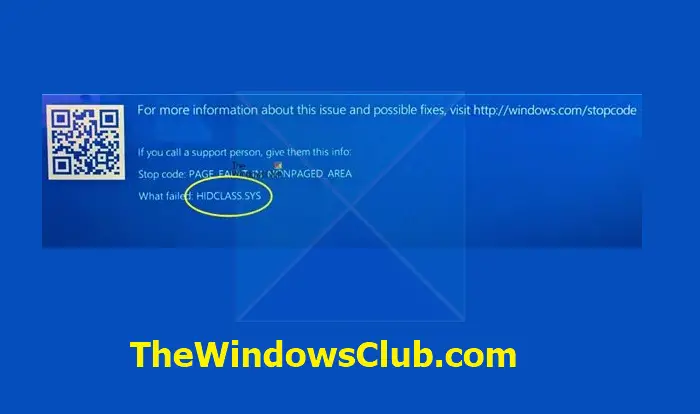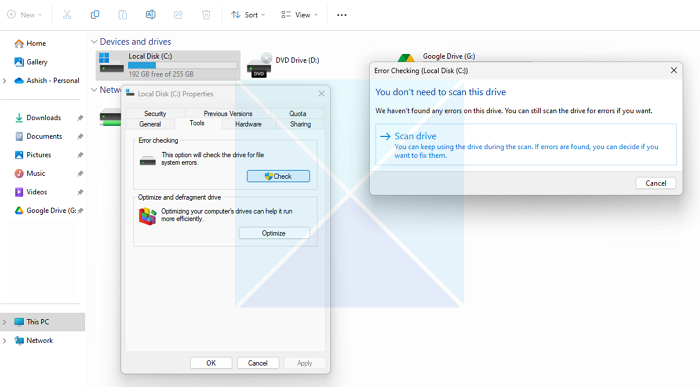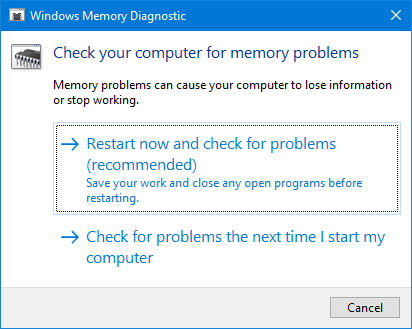HIDCLASS.SYS is a Windows operating system file driver file. HID stands for Human Interface Device, which translates into Keyboards, Mouse, and other input devices. This critical system driver file connects different devices across the system. This includes a Word Processor’s functionality to access the printer to print the documents. It comes under the category of kernel mode device drivers. If this driver fails, it results in a Stop Error.

There can be the following BSOD Errors that are related to this file,
- KMODE EXCEPTION NOT HANDLED.
- SYSTEM SERVICE EXCEPTION.
- DRIVER POWER STATE FAILURE
- PAGE FAULT IN A NONPAGED AREA.
- SYSTEM THREAD EXCEPTION NOT HANDLED
- DRIVER VERIFIER IOMANAGER VIOLATION.
- IRQL NOT LESS EQUAL.
The fixes for this issue is pretty straightforward. Now, finally, let us check how to fix this issue.
HIDCLASS.sys failed Blue Screen
The following potential fixes will be carried out to fix BSOD errors related to hidclass.sys on Windows 11/10:
- Update, Rollback or Disable Drivers.
- Using System File Checker.
- Run ChkDsk Utility.
- Check the memory for the errors.
If you usually create a System Restore point, you can try to undo any modifications on your computer by performing System Restore. Secondly, it is recommended that you carry out these tasks mentioned below in Safe Mode with Networking only.
1] Update, Rollback or Disable Various Drivers
The incompatibility between the Operating System and the Driver might also give rise to issues like this. So, you can try to Update or Rollback any of the conflicting drivers. This should include the drivers under the Keyboard, Mouse, USB, and HID Drivers sections.
2] Run System File Checker
- Right-click on the Start button and click on Windwos terminal (Admin
- Type the following command to run System File Checker, then press Enter.
sfc /scannow
- Restart your system after the scan is completed.
Read: FixWin can run the System File Checker utility with a click.
This will fix all the bad or damaged collections of your system files, while the next step will help you use the check disk utility to detect and fix any bad sectors on your disk physically and logically.
3] Run ChkDsk Utility
- To run ChkDsk, open This PC.
- Right-click on your Windows operating system partition.
- Click on Properties. Now, navigate to the tab labeled Tools.
- Under the section for Error Checking, click on Check.

- A new mini window will now pop up. Click on Scan drive.
Let it scan your disk drive partition, and after that, reboot your computer for the changes to take effect.
4] Check the Memory for the Errors
To fix any issues with your RAM, follow the following steps to Run the Memory Check on your computer:

- Start by pressing WINKEY + R button to launch the Run utility.
- Then type in mdsched.exe and then press Enter.
- It will launch the Windows Memory Diagnostic Tool and will give out two options
- Restart now and check for problems (Recommended)
- Check for problems the next time I start my computer
The computer will restart and check for memory-based problems according to your selected option. If you get any issues there, it will fix them automatically. If no issues are detected, this is probably not the cause.
I hope something here helps you.
What is the blue screen error in PDC.SYS?
Sometimes, when you wake up your PC or laptop from sleep mode, you might encounter a BSOD error related to the PDC.sys file. This issue can be caused by various factors, such as corrupted system files, outdated device drivers, or hardware conflicts.
What is an Intel HIDClass driver?
The HID class driver is responsible for creating and initializing the functional device object (FDO) for an underlying input device. It provides an upper-level interface for managing the FDO and its child devices, known as HID collections.